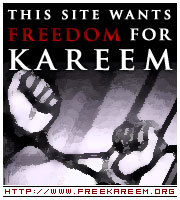Army's Kashmir Conundrum
The following is an article from the Hindustan Times by Omar Khalidi on Indian Army's recruitments from the state of Jammu & Kashmir.
Joining the army can be considered the ultimate proof of loyalty to the state and acceptance of its legitimacy. This is especially true for countries without conscription. If people inhabiting a region torn by international conflict join the army of one side or the other, they confirm their identification with the state. Conversely, the recruitment of particular groups into the forces will be an indication of trust the state reposes in the group. If the region has a diverse population, the preferred choices of the various segments of the population will be another indication of their interest or the lack of it in the army. The region of Jammu, Kashmir and Ladakh offers almost a laboratory-like condition where one can test the interest if not the loyalties of each population segment.
Kashmir has been the bone of contention between the people of the region, India and Pakistan for six decades. Muslims of the three regions collectively constitute the majority. But the Muslim population is diverse: Kashmiri-speaking Muslims are different from Jammu, Poonchi, Bakkarwal, and Gujjar Muslims. The Ladakh population is divided between Muslims and Buddhists. Dogra Hindus and a small number of Sikhs live in Jammu. Each of the three regions and the respective populations relates differently to the Indian state and its army.
Before independence, the Maharaja’s army, the Jammu & Kashmir (J&K) Rifles consisted of Dogras, Rajputs, Sikhs and some Muslims from what is today Azad Kashmir. The Maharaja excluded Kashmiri Muslim subjects from enlisting in the army. At independence, the army split along religious lines during the war with Pakistan in October 1947. The Hindus remained on the Indian side while Muslims chose Pakistan. Shortly after independence India abolished Princely States’ Forces, including Hyderabad’s predominantly Muslim army. However, the Hindu-dominated J&K Rifles, symbolised by its denominational war-cry “Durga Mata ki Jai” was retained and absorbed in the Indian army. The J&K Rifles is composed of men from Doda, Poonch and Rajouri villages, mostly Hindus. Regardless of the constitutional arrangements between Srinagar and Delhi, the region of Jammu and its largely Hindu inhabitants are fully integrated with India and identify as such. There has been no dearth of recruits from this area for J&K Rifles or other regiments. Unlike Valley Muslims, Muslims in Poonch do not share the same degree of alienation as do the Kashmiris, which explains why a woman like Wahida Prizm and her husband Maj. Fuad Khan earned a commission.
The Hindus of the Valley (the Pundits/Brahmins) rarely joined the army, not because they did not qualify or were distrusted by the state. They shunned the army — TN Raina, the chief of the army staff from 1975-78 being an exception — because they have better opportunities elsewhere. There are reports however, that the Army and the Air Force was especially recruiting Kashmiri Pundits, in the refugee camps in Jammu and Delhi.
Like the Jammu Hindus and Kashmir Pundits, the Buddhists of Ladakh identify completely with India. Many Ladakhi Buddhists are skilled mountain warriors, especially in high-altitude mountains’ snowy, whiteout conditions. The Buddhists, together with Tibetans, constitute the Ladakh Scouts (LS), upgraded as a regiment in 2000. Ladakh Muslims, a majority in the Kargil district were represented far fewer in numbers in LS, about 4 percent. But as part of Operation Sadbhavna, launched in late 2000 by Lt. Gen. Arjun Ray, the army undertook border-area development to win the confidence of the population, including villages like Turtuk, part of Azad Kashmir until 1971 war, when India wrested it from Pakistan.
Some officers — Maj. Gen. V.S. Budhwar, in particular — suspected the Turtuk villagers, Balti-speaking Muslims of loyalty to Pakistan. However, as part of the Operation Sadbhavna, more Muslims were inducted into the LS, increasing their percentage to 30, thus earning the confidence of the population.
That leaves the question of Kashmir Valley Muslims in the army. It is in the Valley that there is strongest resentment to a perceived army of occupation indulging in large-scale violence, illegal detentions, and rape. Few joined the Indian army. Those few Kashmiri soldiers who died fighting for India in 1999 Kargil war were not mourned in their villages. Given the resentment of large sections of Kashmiri population, it is understandable that middle class men would not want to enlist in the army.
According to the National Sample Survey only 3.5 per cent of Kashmir's population was below the poverty line in 1999-2000. The national average was as high as 26.1 per cent. So the pull factor for the army is much lower than in other states. However, a decade and a half of fighting since 1989 has increased poverty in Kashmir and fatigue if not disillusion with the highly splintered Mujahidin factions, often at loggerheads. This is what explains that increasing attraction of the army for the poverty-stricken, war-weary Kashmiri youth that has began enrolling in the army in thousands since 2001.
In conclusion, Kashmiris indicate a un-uniform pattern of recruitment in the Indian army. The people of Jammu and Ladakh Buddhists are most enthusiastic for the army. Initially, the Kargil Muslims were less recruited but since 2001, their percentage is increasing in the Ladakh Scouts. Finally, the army is attracting initially reluctant Valley Muslims, which bode well for India, ill for Pakistan.[HT]

1 comment:
RS,
Thanks for flagging this post. Khalidi's contention that the Maharaja excluded Muslims from his army's ranks is questionable. By most accounts, a most of his Muslim soldiers deserted as soon as the 'tribal invaders' started their campaign.
Post a Comment